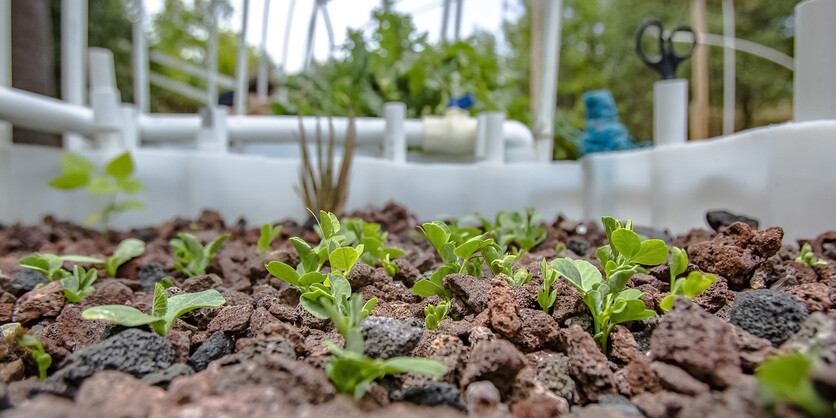What is Aquaponics?
What is Aquaponics? To put it simply, aquaponics is the combination of two disciplines of cultivation. The first, Aquaculture, is the raising of fish or aquatic life and the second, Hydroponics, is the growing of plants in water. When these two methods of growing are utilized together, they form the basis of what is known as aquaponics.
But what is aquaponics exactly? Any system or method of raising aquatic life and growing plants together simultaneously can be considered aquaponics. The most common form of aquatic life raised or grown in an aquaponics system are fish. Plants grown in an aquaponics system can vary greatly, but any type of plant that loves water will usually do very well. However, you’re not limited to just water loving plants in an aquaponics system. Depending on the type of setup used, you can grow almost any kind of plant!
How does Aquaponics work?
Aquaponics attempts to mimic the natural cycle seen in nature. The aquatic life grown in an Aquaponics system will produce waste that is transformed by beneficial bacteria into nutrients for the plants grown within the system. This cycle of waste transformed into nutrients is achieved through a biological process known as the Nitrogen Cycle.
Typically, the water within the system is cycled via water pumps from the fish tanks to the plant grow areas. These grow areas can be a variety of things, including media grow beds, NFT channels, deep water culture beds, bog filters, etc. The water is “filtered” of its waste and nutrients by the grow areas and is then returned back to the fish tank as clean water.
Basic Components of an Aquaponics System
There are three basic components of a typical aquaponics system. The fish tank, the water pump, and the plant grow areas.
- Fish Tank – The fish tank in an aquaponics system is a container of any kind that houses the aquatic life raised in the system. These tanks are typically made from durable plastics but are sometimes made from wood lined with pond/waterproof liners or even aquariums are used.
- Water Pump – As essential piece to any aquaponics system is the water pump. Depending on the system, the water pump can be placed in either the fish tank itself, or in a sump tank. The water pump moves water from the fish tank to the plant grow areas, feeding the plants and purifying the water for the fish.
- Plant Grow Areas – These areas can be very different, depending on the design of the aquaponics system. Typically seen as media-filled grow beds in at-home or backyard aquaponics systems or deep water culture beds in commercial systems, the plant grow areas are where the plants and vegetables are housed and grown to size for harvest.
More complicated designs of an aquaponics system exist that include things like a sump tank, solids filtration, biofilters, etc. More on these topics can be found in the Articles section of the website.
Benefits of Aquaponics
There are many benefits to utilizing an aquaponics system, which include:
- Water Conservation – Because water in the system is constantly cycled in a relatively closed system, none of the water is lost through run off and is better utilized by the plants by delivering the water directly to where it is needed.
- Easy to maintain – Maintenance of an aquaponics system is simple and relatively straight forward and can be designed to be easy and efficient to clean and maintain. Little to no weeding required!
- Versatile – A wide variety of vegetables and plants can be grown as well as a wide variety of aquatic life, not just fish!
- Space efficient and scalable – From small indoor systems, to larger backyard systems, all the way to commercial sized farms, aquaponics can be done at any scale.
- Environmentally friendly – Not only can aquaponics be a sustainable endeavor, it is possible to grow food or raise fish almost anywhere utilizing an aquaponics system. From urban jungles to desert wastelands, as long as you have the energy (sun or electricity) and the water to grow plants and raise fish, you can do so through an aquaponics system!
- High Density Output – through an aquaponics system, plants and fish can be grown in higher densities, allowing for a higher output of goods to space ratio.
